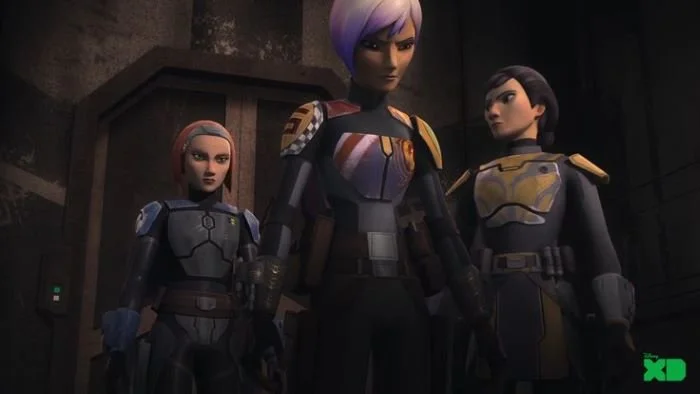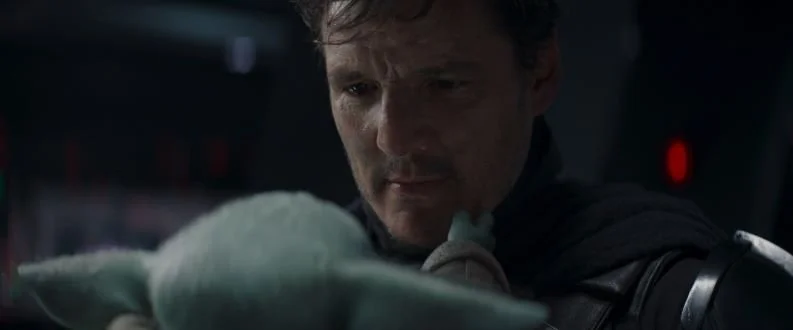Helmet Plot Point Teased By ‘The Mandalorian’ Season 3 Writer
The political and social structure of the Mandalorians is complex. Karen Traviss spent several novels carving out the hierarchy and relation of the different clans and houses, as well as the dos and don’ts of being a Mandalorian. Most of this got thrown out of the window when George Lucas and Dave Filoni decided to present a more peaceful Mandalore in The Clone Wars with only a small faction called the Death Watch still clinging to the ancient warrior ways. Both The Clone Wars and Rebels presented the Mandalorians as a deeply shattered society with constantly shifting alliances, torn between isolation and the urge to play a bigger role in the galaxy.
When the Disney+ series The Mandalorian debuted in 2019, it introduced a new rule of Mandalorian culture that has not been heard of before. Din Djarin, as well as the other members of his creed, were not allowed to remove their helmets and show their faces to any other living being. Flashback scenes in season 1 showed the young Djarin being rescued by a tribe that called themselves Children of the Watch, most probably an offshoot of Death Watch. The Children of the Watch adhered to the Way of the Mandalore, which dictated a strict code of behavior based on a strong belief in heritage. It was this code that made it basically sacrilegious to take off their helmets in front of others. If their helmets were removed, they would never be able to wear them again and would not even be regarded as Mandalorians anymore.
RELATED: How Boba Fett Disintegrated The Mandalorian Code
From an out-of-universe perspective, the concept of never being allowed to show one’s face was created by Jon Favreau when he established the backstory for Din Djarin in 2017. He wanted to go back to the times of the original trilogy when Boba Fett, the only Mandalorian to be featured in the first three films, was a mysterious character:
“…how do you get back to what George did, which was treat the characters almost like action figures? How do you get back to how young kids interact with Star Wars, the colors and shapes, and characters? By keeping [Mando's] helmet on all the time. It's not about the face under it, it's about the helmet. Same with Boba Fett; you don't think about what's under the helmet, you think about that mysterious silhouette."
Favreau was surprised when Dave Filoni did not object to this new rule. After all, the other Mandalorians that were shown in The Clone Wars and in Rebels never had a problem with showing their faces to others:
"As I was first pitching the Mandalorian story [in November 2017] and figuring out what I wanted the show to look like, I gave myself the freedom to tell the story that I wanted to tell. And, to his credit Dave never said, 'Oh, you can't have [Mandalorians not removing their helmets] be the rule; we've already established that [they can remove their helmets].'”
The series never gave a clear explanation on why the Children of the Watch were not allowed to take off helmets in front of others. Recently in The Book of Boba Fett, the Armorer explained that they did it to avoid suffering the same fate as their home planet.
Favreau also used the “helmet thing” as a starting point to show Djarin's growth during the series. The Children of the Watch has been living in a kind of self-proclaimed isolation, apart from other tribes and clans. When Djarin met Bo-Katan and her Night Owls in season 2 of the series, he was shocked to see them constantly removing their helmets. Katan on the other hand dismissed the Children of the Watch as a “cult of religious zealots that broke away from Mandalorian society.”
Taking on the responsibility for Grogu and meeting other Mandalorians who lived by a less strict code caused a change inside Djarin. Perhaps “This is the way” might not be the same as “This is the only way.” Technically speaking, he had removed his helmet in the final episode of season 1, so that IG-11 could heal him. However, the droid was no human being, so this did not violate the rule. When he did it again in the penultimate and ultimate episodes of season 2, his motivation was to save the other member of clan Mudhorn and then give the Child the possibility to see the face of his “father” for the (then believed) first and last time.
By this point in time, Djarin had already evolved beyond the code of the Children of the Watch and Favreau has teased that he intends to further dwell on this plot point in season 3:
"I wanted to preserve the magic of that, or return it to that, knowing full well that we would get complex later, that there are some groups that have evolved, like Bo-Katan's group, that are dealing more with the politics of the moment. Having those two meet each other and contend with one another was a way to address that."
As seen in The Book of Boba Fett, Djarin had to pay the price for stepping outside the boundaries of his tribe when the Armorer, more or less, expelled him and told him that he was not a Mandalorian anymore. She also hinted at a possible solution. He could redeem himself in the living waters beneath the mines of Mandalore. It remains to be seen if Djarin will actually try to find them (they still might have been destroyed after all) in order to return to his creed. He may instead choose to continue on his new path, accepting that people like Bo-Katan, who have no problem removing their helmets, are no less Mandalorian than he is.
READ NEXT: John William Returns to Score 'Kenobi'
Source(s): The Direct



